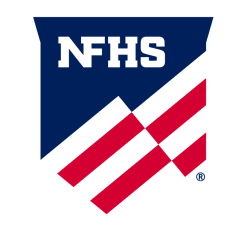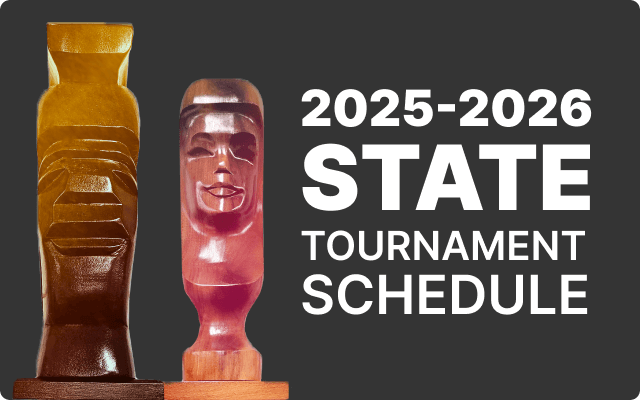The NFHS Voice

 The NFHS Voice
The NFHS Voice
With Focus on Education, State Associations Best Equipped to Direct High School Sports
Dr. Karissa L. Niehoff, NFHS Executive Director
During the next six to eight weeks, “going to state” will be heard by millions of high school student-athletes, fans and supporters in communities throughout the country. The excitement of playing with high school teammates in the state playoffs is a memory that endures for a lifetime.
NFHS member state associations will be coordinating these events this fall – football, soccer, volleyball, cross country, field hockey and others – and many state associations have been successfully conducting championships in the fall for 50 years – in some cases, 100 years. Heading that list are the state associations in Illinois, Wisconsin, Iowa and Michigan – the charter members of the NFHS in 1920.
The Illinois High School Association will be celebrating its 50th Girls Volleyball State Finals and its 50th Football State Finals. While 50 years is impressive, that number pales in comparison to the 131 years that the IHSA has conducted its Boys Track and Field Championships in the spring.
The Wisconsin Interscholastic Athletic Association also started its state events for girls volleyball and football in the 1970s, but has an even longer history with the Boys Cross Country State Finals that started in 1913.
The Iowa High School Athletic Association, which was formed in 1904, has been conducting Boys Cross Country State finals since 1930 and football since 1972 – in addition to its winter sport stalwart of wrestling since 1926 and summer baseball since 1928.
Similarly, the Michigan High School Athletic Association has been conducting fall championships in football and girls volleyball since the 1970s and boys cross country and tennis since the 1920s.
These four state associations, along with similar organizations in the 46 other states plus the District of Columbia, have been successfully governing education-based high school sports – and other afterschool activity programs in some states – for more than 100 years in some cases. These education-focused associations, most of which were formed by the mid-1940s, were started by school-based people in an attempt to establish eligibility standards and halt the process of colleges and universities controlling meets and tournaments involving high school athletes.
Many of these associations have recently celebrated 100 years of successfully providing opportunities for students to compete in education-based athletics and activities programs. These associations are governed by Board of Directors and committees composed of individuals within member schools – superintendents, principals, athletic directors, coaches and others – who have an educational focus to enforcing eligibility, playing and academic rules.
Unfortunately, in our travels across the country to NFHS section meetings, we have heard that many of our state associations are besieged by an ever-growing number of transfer requests and parents bypassing legal counsel and going straight to state legislatures when a ruling goes against them.
State government involvement in the work of state associations has existed for many years; however, fueled by new generations of parents who have less concern for rules in general and a weaker understanding of the purpose of education-based athletics specifically, threats to the daily work of these education leaders loom larger every day.
The primary purpose of high schools is to academically prepare students for productive contributions in their future lives as citizens; it is not to prepare students to be able to play sports at higher levels. In upholding the educational mission of schools, state associations have eligibility and transfer rules in place that are designed for equitable and fair participation in interscholastic athletics and activity programs.
The immense changes that have occurred in college sports the past few years with the advent of NIL have probably accelerated these outside threats, but the focus of high school sports is different and must remain different. It is education-based and must remain with education as the guiding principle.
From a governance standpoint, the best possible scenario exists across the country when it comes to high school sports. Education-based sports programs are connected to classroom learning every day. And the 51 athletic/activity associations that govern activity programs have adopted eligibility, participation, transfer and academic rules consistent with their member schools.
Can you imagine for a moment what the high school sports landscape would be like without the structure in place by state high school associations? Probably much like it was more than 100 years ago when inequities were occurring before the establishment of eligibility rules. Without rules and the enforcement of rules, it is chaos.
The 51 member associations of the NFHS have established programs to ensure that the privilege of competing in high school sports is available to everyone in their member schools – and that everyone is treated in a fair and equitable manner. We believe these education-based associations are best served for directing athletics and other activity programs in our nation’s schools.
Dr. Karissa L. Niehoff is in her seventh year as chief executive officer of the National Federation of State High School Associations (NFHS) in Indianapolis, Indiana. She is the first female to head the national leadership organization for high school athletics and performing arts activities and the sixth full-time executive director of the NFHS. She previously was executive director of the Connecticut Association of Schools-Connecticut Interscholastic Athletic Conference for seven years.









